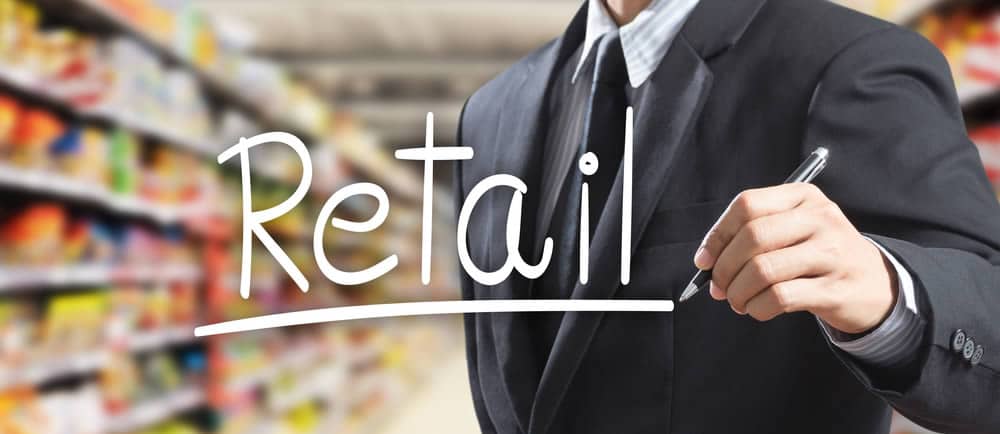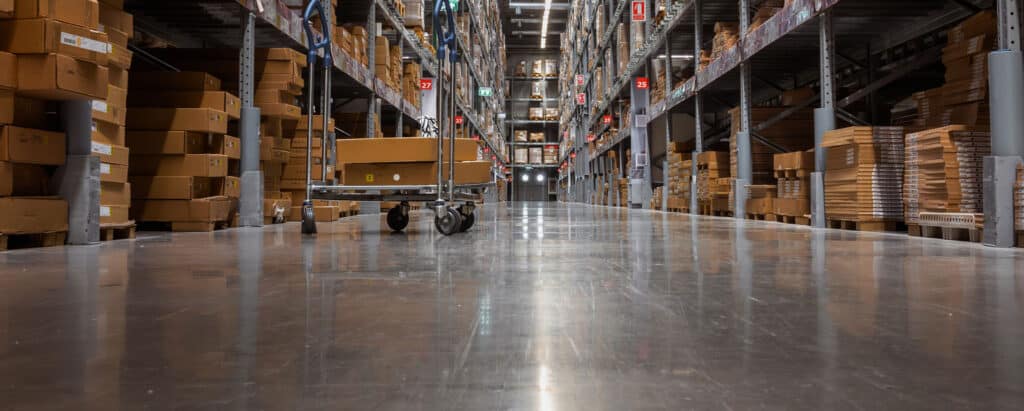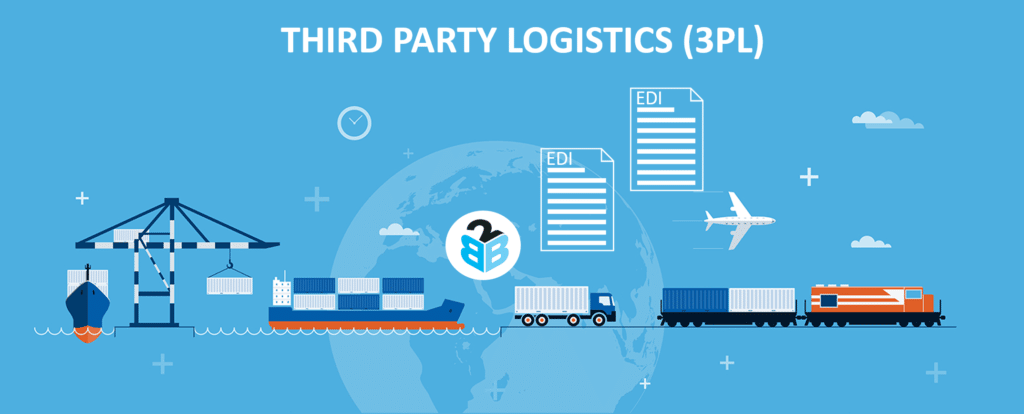
Retail fulfillment is the process of receiving and processing orders from customers and then delivering products to them. It’s an essential part of any retail business and can have a significant impact on a company’s bottom line.
There are many facets to retail fulfillment design. Including but not limited to obtaining products from suppliers, inventory management, online sales, and return and exchange services.
Good retail fulfillment is important. It is directly related to your customer’s sense of store experience. It directly affects the stability and long-term development of your store.
There are several factors to consider when setting up a retail fulfillment operation, including the type of products sold, order volume, geographic areas served, and delivery methods used. Choosing the right combination of these factors is critical to ensuring smooth and efficient operation.
When done right, retail fulfillment can be a major competitive advantage. It can help retailers gain market share by providing a better customer experience than their competitors. It also helps them save money by reducing inventory costs and maximizing space.
Imagine you buy a product from a store and receive it a month later (advertised as 15 days in store). The goods are very poor quality, and the negotiation with the store is fruitless, and the goods cannot be returned or exchanged. So will you come back to buy products from this store? Of course not, everyone will reject this store after they buy it once.
- The Importance of Retail Fulfillment
- Start Optimizing Your Retail Fulfillment Process
- Retail Fulfillment Model
- How to Offer Your Retail Fulfillment
The Importance of Retail Fulfillment
As mentioned earlier, retail fulfillment ultimately determines the customer experience. A well-run retail fulfillment business can be a major competitive advantage, but a poorly-run business can be a major source of frustration.
There are several factors to consider when setting up a retail fulfillment operation, including the type of products sold, order volume, geographic areas served, and delivery methods used. When done right, retail fulfillment can deliver significant benefits, including:
- Increased customer satisfaction: When customers receive their orders on time and without problems, they are more likely to be satisfied with the retailer’s overall experience. This leads to increased sales and repeat customers.
- Increase customer loyalty: Good retail fulfillment can turn one-time buyers into lifetime customers. If customers know they can rely on a retailer to deliver their orders on time and as expected, they are more likely to continue doing business with that retailer even if there are occasional issues.
- Reduced costs: Efficient retail fulfillment operations can help reduce many of the costs associated with online sales, including inventory, shipping, and returns processing.
- Increased profits: By reducing costs and increasing sales, good retail fulfillment can help improve a retailer’s overall bottom line.
Start Optimizing Your Retail Fulfillment Process
After learning about the importance of retail fulfillment and the benefits that good retail fulfillment can bring, the next step is to think about how to optimize our retail fulfillment process.
Factors to consider when optimizing retail fulfillment operations include the type of products sold, order volume, geographic areas served, and delivery methods used.
- Product category. Some products are fragile and require special handling. Others are time sensitive and need to be delivered as soon as possible. Still others are bulky or bulky and difficult to store or transport. By understanding the characteristics of the products they sell, retailers can ensure their fulfillment operations have the proper equipment to handle them.
- Order Volume Another important factor to consider when optimizing retail fulfillment operations is order volume. Retailers selling high volume orders will need fulfillment solutions that can handle large volumes of daily orders, while low volume operations may be able to be addressed with simpler solutions.
- Geography. The geographic area served by the retail business also affects fulfillment requirements. International shipments may need to go through customs and may otherwise be subject to different regulations than domestic shipments.
- Delivery method. In the end, delivery methods play a role in how a retail business fulfills an order. Common shipping methods include shipping (land, air, or ocean), local pickup and delivery (for customers who live near the retailer), and in-store pickup (for customers who want to avoid shipping costs). Each delivery method has its own advantages and disadvantages, which should be considered when choosing the best option for a given order.
Retail Fulfillment Process
- Receive inventory
- Warehousing
- Picking and packing
- Shipping orders
- Process returns
Retail fulfillment involves several different activities. By understanding and optimizing every step of the process, you can ensure that your business is running as efficiently as possible.
Receive Inventory
Receive inventory is the first step in retail fulfillment. Getting this step right is critical, and it’s directly related to whether your store is on the right track. You need to pay attention to the following points to avoid mistakes.
Make sure you have enough space for your inventory. And sorted, you definitely don’t want to find out where your products are when you need them. If you are concerned about not having enough stock to store your product, please look for a supplier who can help you stock it, such as us – the leading wholesale factory for jade rollers and gua sha stones.
When you receive the goods from the supplier, please check whether there is any problem with the goods at the first time. If there is damage, please record it. It is a good idea to keep pictures and videos to communicate claims with suppliers.
Keep your inventory records. Including total inventory, daily inventory purchases and sales. Make sure your products are always in a stable supply state and avoid sales being affected by insufficient inventory. Recording can be done using a simple spreadsheet or inventory system.
Warehousing

By assigning spaces to store inventory, businesses can keep track of what they have on hand and ensure that items are properly protected. When choosing a warehouse, it’s important to consider the size of the space, the type of inventory to store, and climate control needs. If you feel that you want to save the cost of inventory, you can choose a drop shipping business.
Pick and Pack
Picking and packing involves choosing the right products and packing them properly for shipping. This step is important to ensure that the product reaches its destination safely and is available to customers.
- Make sure to choose the correct product. This may seem obvious, but it’s important to double-check that the product you choose is what the customer ordered. The importance of inventory management mentioned earlier is reflected.
- Pay attention to details when packaging products. Make sure it is securely packaged and properly labeled.
- Use appropriate shipping materials. Choose a box or envelope that will protect the product during shipping.
Shipping Order
Shipping an order involves choosing the right products and packing them properly for shipping. This step is important to ensure that the product reaches its destination safely and is available to customers.
At the same time, choosing the right mode of transportation can save you costs to a large extent and improve the safety of your goods in transit. Especially if you have an order for international delivery.
Process Returns

When a customer returns a product, a business should first check that the return is within its return policy. If not, businesses should still inspect items for damage, track returned items, and provide customers with receipts.
It is important to note that some items may not be returned due to hygiene reasons, especially personal items. For example, items such as underwear or swimwear may not be returned if they are worn. In these cases, businesses should offer customers store credits or a discount on their next order rather than a refund.
By following these simple tips, businesses can ensure their returns process is smooth and efficient.
Retail Fulfillment Model
In addition to the above process, there are several alternative retail fulfillment models that businesses can use to distribute their products. The most common are direct sales, consignment, and direct-to-consumer (DTC).
In dropshipping, the retailer does not have any inventory on hand. Instead, they simply take orders from customers and purchase products from third-party suppliers, who ship the products directly to customers. Dropshipping is often used by businesses that sell products that are difficult or expensive to store, such as electronics or furniture. Of course, dropshipping is a great option for some new store owners who have low start-up capital and don’t want to take on too much risk.
Want to do direct Gua Sha sales? Choose us, we are a professional gua sha factory!
Consignment is when a retailer agrees to sell a product on behalf of another party (usually a manufacturer or wholesaler). The retailer only pays for the product after it has been sold to the customer. This arrangement is often used for high-end or luxury goods, where retailers want to provide a level of service that mass-market retailers cannot replicate.
In direct-to-consumer retail, businesses sell their products directly to consumers without going through any middlemen. This model is often used by companies that have a direct relationship with customers and want to provide a more personalized shopping experience. It can also be used by companies that want to control every aspect of their product distribution and marketing.
How to Offer Your Retail Fulfillment
To improve retail performance, businesses need to focus on a few key areas: simplifying inventory management, reducing shipping costs, and delivering exceptional customer service.
Inventory management is an essential part of retail fulfillment. Businesses need to have a system that can track inventory levels and replenish inventory as needed. This can be done with a simple spreadsheet or an advanced inventory management system. Either way, businesses need to ensure they keep accurate records of their inventory and reorder items as needed.
Reducing shipping costs is another important aspect of retail fulfillment. One way is to use flat rate shipping on all orders. This means that regardless of the weight or size of the order, the company will charge a fixed shipping fee, but this method may lead to loss of money when faced with large order quantities. Another approach can be taken and shipping is calculated by package weight. For example, there is a shipping fee of 1$ for the weight of less than 0.5 kg. Increments as the weight of the order increases. The last option is to offer free shipping on orders over a certain quantity. This encourages customers to spend more on their orders, which offsets shipping costs, and it may also lead to higher conversion rates.
Finally, excellent customer service is critical to retail fulfillment. If customers have any questions or issues with their order, they should be able to easily contact the merchant.
Additionally, businesses should ensure that they fulfill orders in a timely and accurate manner. Businesses should communicate with customers immediately if there are any delays or issues with the order. If you’re looking to improve retail fulfillment, local pickup, 3PL support, and inventory management can all help.
Local Pickup
Local pickup can be a good option for businesses looking to improve their retail performance. When customers choose local pickup, they can pick up their order at the merchant’s location.
This is convenient for customers because they don’t have to wait for orders to ship, and it allows businesses to avoid high shipping costs.
Local pickup is also a great option for businesses looking to provide great customer service.
When customers pick up their order at the business location, they can ask questions and get help with any issues they may have. In addition, businesses can ensure that orders are fulfilled in a timely and accurate manner. Businesses can communicate with customers immediately if there are any delays or issues with the order.
But local pickup has many restrictions. For example, if it is an international order, do you want a foreign customer to come to your country to pick up his goods? This doesn’t seem realistic. (If not a very large order.)
Consider 3PL Support

A third-party logistics (3PL) provider can be an excellent choice for businesses looking to improve their retail performance. 3PL suppliers offer a variety of services that simplify inventory management, reduce shipping costs, and provide excellent customer service.
3PL providers can help businesses simplify inventory management by offering real-time inventory tracking and automated replenishment. This saves businesses time and effort spent on manual inventory management tasks. Additionally, 3PL providers can often offer lower inventory prices than businesses can get themselves.
Utilize Inventory Management Software
Make good use of an inventory system, which can help businesses simplify inventory management and reduce shipping costs. There are a variety of inventory management software programs available, each with its own set of features. Businesses need to find the plan that best meets their needs.
Some of the features businesses should look for in an inventory management software program include the ability to track inventory levels, replenish inventory as needed, and ship orders quickly and efficiently. The software should also be easy to use and integrate with other business systems.
Improve Your Retail Fulfillment Process
Excellent customer service is critical to retail fulfillment. If customers have any questions or issues with their order, they should be able to easily contact the merchant. Additionally, businesses should ensure that they fulfill orders in a timely and accurate manner. Businesses should communicate with customers immediately if there are any delays or issues with the order.
Start your 2022 retail business and hopefully this article will add a little help to your retail business. If you think this article is helpful to others, please share it with the people you think need it. If you are wrong about some of the points in the article or need to be improved, you are welcome to express your views in the comment area or via email, and we will actively discuss with you. Thanks for reading.






